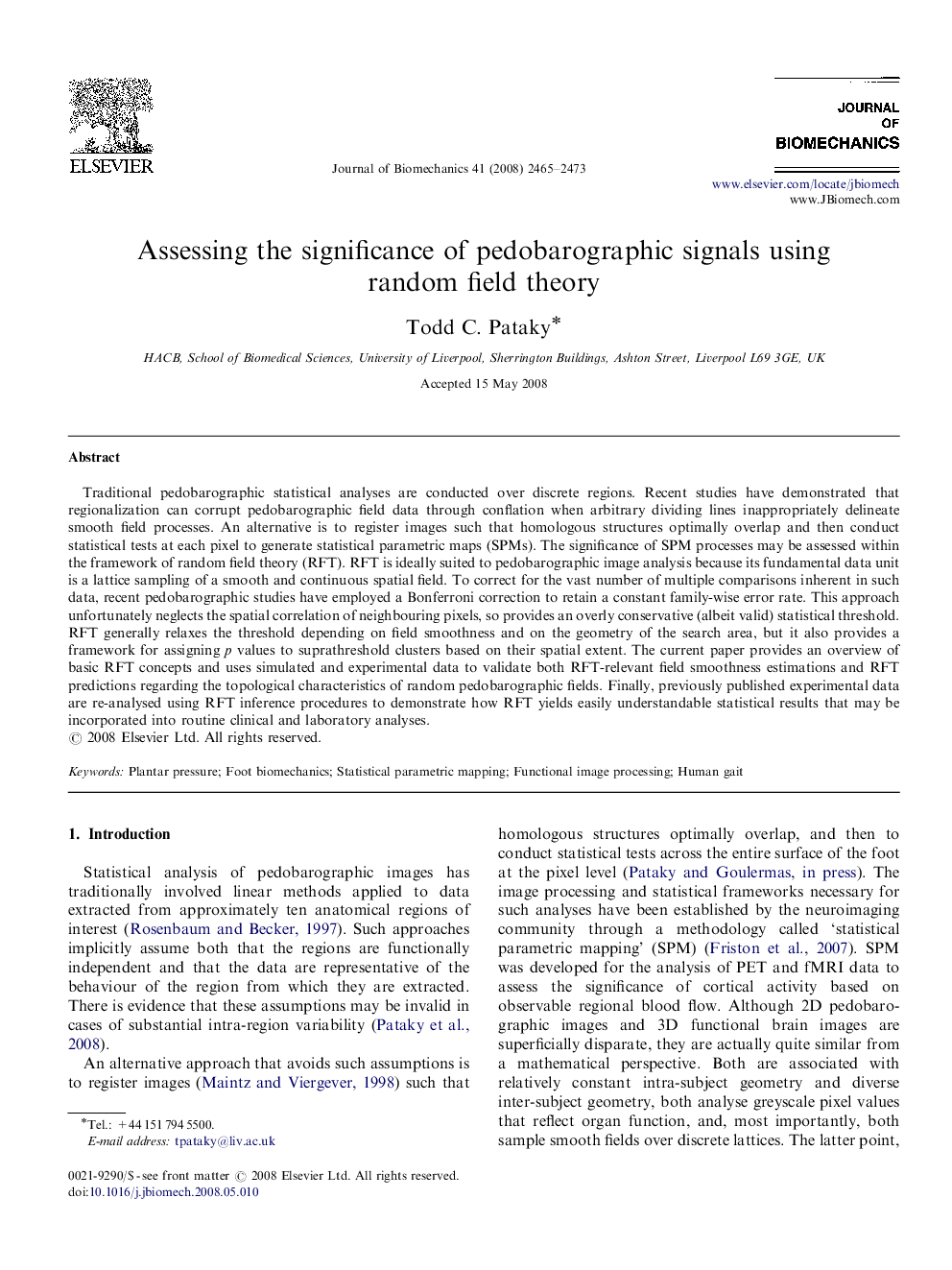| Article ID | Journal | Published Year | Pages | File Type |
|---|---|---|---|---|
| 874960 | Journal of Biomechanics | 2008 | 9 Pages |
Traditional pedobarographic statistical analyses are conducted over discrete regions. Recent studies have demonstrated that regionalization can corrupt pedobarographic field data through conflation when arbitrary dividing lines inappropriately delineate smooth field processes. An alternative is to register images such that homologous structures optimally overlap and then conduct statistical tests at each pixel to generate statistical parametric maps (SPMs). The significance of SPM processes may be assessed within the framework of random field theory (RFT). RFT is ideally suited to pedobarographic image analysis because its fundamental data unit is a lattice sampling of a smooth and continuous spatial field. To correct for the vast number of multiple comparisons inherent in such data, recent pedobarographic studies have employed a Bonferroni correction to retain a constant family-wise error rate. This approach unfortunately neglects the spatial correlation of neighbouring pixels, so provides an overly conservative (albeit valid) statistical threshold. RFT generally relaxes the threshold depending on field smoothness and on the geometry of the search area, but it also provides a framework for assigning p values to suprathreshold clusters based on their spatial extent. The current paper provides an overview of basic RFT concepts and uses simulated and experimental data to validate both RFT-relevant field smoothness estimations and RFT predictions regarding the topological characteristics of random pedobarographic fields. Finally, previously published experimental data are re-analysed using RFT inference procedures to demonstrate how RFT yields easily understandable statistical results that may be incorporated into routine clinical and laboratory analyses.
